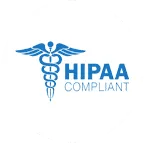Clearinghouse in medical billing plays a pivotal role in the complex scenery of healthcare administration. As healthcare professionals deal with drafting and submitting claims to insurance payers, clearinghouses serve as vital intermediaries, streamlining the exchange of information and ensuring accuracy and efficiency.
Clearinghouses assist providers in getting compensated for the services they give to patients. These electronic stations are essential for maintaining the efficient revenue cycle operation since they do anything from confirming insurance coverage to identifying problems in claims before submission. Comprehending clearinghouse operations and their significance in the healthcare domain can enable providers to handle billing intricacies adeptly, augmenting their profitability.
Now, let’s explore medical billing clearinghouses to learn more about their advantages, uses, and potential impact on the financial stability of medical practices.
What Is a Clearinghouse in Medical Billing?
A clearinghouse is a third party between payers and healthcare providers, facilitating medical claims processing. It standardizes and reviews claims to minimize medical coding errors and streamline billing. Clearinghouses ensure compatibility with payer systems by converting data into a uniform format, enhancing accuracy and efficiency in healthcare revenue management.
They also bolster compliance with data standards and privacy regulations, expediting reimbursement. Although not legally mandated, many insurance entities, such as Medicare, Medicaid, and numerous private insurers, prefer or require electronic submission of healthcare claims, underscoring the importance of clearinghouses in modern healthcare operations.
How a Medical Claims Clearinghouse Works

Medical billing clearinghouses act as intermediaries between healthcare providers and insurance payers, streamlining the claim submission and adjudication process. The fundamental steps involved in the functioning of a medical claims clearinghouse include:
1. Receipt of Claims Data
The healthcare provider creates a claim with essential patient and service data during a patient’s visit. After that, this information is electronically sent to the clearinghouse.
2. Data Scrubbing and Error Checking
The clearinghouse thoroughly examines the data that has been supplied, finding and fixing any errors or omissions. This procedure ensures the claim satisfies the precise specifications of the intended payer.
3. Transmission to Payers
Once the data has been scrubbed and validated, the clearinghouse securely transmits the claim to the appropriate insurance payer. This transmission can occur through various electronic data interchange (EDI) methods, ensuring compliance with the payer’s preferred format.
By understanding the inner workings of a medical claims clearinghouse, healthcare professionals can appreciate these entities’ pivotal role in expediting the reimbursement process and minimizing claim rejections.
Features of Clearinghouse Services
The features of clearinghouse services in medical billing are vital for guaranteeing appropriate and precise claims processing. These features include:
Error Reduction
The Clearinghouse services involve algorithms and validation standards to minimize the number of errors in handling medical claims processing. They immediately spot any inconsistencies in the coding and documentation; hence, claim rejections are avoided when followed, ensuring the efficient functioning of healthcare claims.
Eligibility Verification
Eligibility verification services are available in real time through clearinghouses. Providers can verify patient insurance and benefits related to coverage earlier before rendering service, costs, or treatment. This helps avoid denial of claims based on eligibility issues and ensures correct billing per insurance/levels.
Patient Billing Support
Clearinghouse functions include patient billing scope functionalities, patent statements generating and sending, patient payments processing, and managing the clearing process requests. This simplifies the provider billing process and simultaneously improves patient satisfaction by providing unbiased information regarding all aspects of their hospital charges.
Analytical Tools and Reporting
Clearinghouses offer analytical tools gained from reporting functionality to enable healthcare professionals to monitor and analyze trends in claim submission, reimbursement patterns, and revenue cycle performance. These ideas allow providers to pinpoint improvement opportunities, capitalize on the most effective price-setting for their financial gain, and help manage the entire business.
By offering these essential features, clearinghouse services are crucial in optimizing healthcare revenue cycle management and improving overall operational efficiency for healthcare providers.
What Does a Clearinghouse Do During Claims Submission?
While entering the claims for submission, a clearinghouse validates, reformats, and sends medical claims electronically to insurance carriers on the part of healthcare providers. They guarantee that the claims comply with payer directives, preventing errors and speeding up reimbursement. Moreover, clearinghouses provide instant eligibility checks and spot problems before claiming, based on which the rate of claims that insurance companies sanction is monitored.
Benefits of Using Clearinghouse in Medical Billing
Using a medical billing clearinghouse has various benefits, greatly influencing how quickly bills are processed. These benefits include:
Quicker Payments
A medical billing clearinghouse guarantees timely claim submission and processing, speeding up the efficient procedure. As a result, faster payments to healthcare providers enhance cash flow and stability of the financial system.
Fewer Claim Denials
Clearinghouses employ advanced validation checks and error correction mechanisms to reduce claim denials. Identifying and rectifying potential issues before submission increases the chances of payers accepting claims, minimizing revenue loss due to denials.
Smoother Billing Process
The clearinghouses enhance the medical billing process through standards on claim formats, patient qualifications, and collection of billing inquiries. To decrease administrative loads on health service professionals and enable them to invest more time in patient treatment by providing accurate, timely billing procedures.
Best Practices for Choosing a Clearinghouse
When selecting any medical billing clearinghouse, several factors must be considered to get appropriate processing claims and revenue cycle management. Here are key criteria to guide your decision:
- Turnaround Time: Determine the efficiency with which cash eventually flows through from claims submitted to a clearing house that processes and transmits them promptly. This facilitates immediate reimbursement, improving cash flow through your facility.
- Technological Compatibility: Assess how well the technology used by the clearinghouse pairs with your current infrastructure, for example, electronic health records (EHR) and practice management software. Because simplicity in data transfer is required for smoother operations.
- Customer Support: Choose a clearinghouse that provides dependable and quick customer service. Prompt handling of problems or inquiries reduces interruptions in invoicing and guarantees seamless functioning.
- Payer Network: Verify that the clearinghouse maintains an extensive list of payers, including the insurance companies you commonly bill. A broad payer network reduces the likelihood of claim rejections due to payer unavailability.
- Cost Structure: Find out how the clearinghouse charges monthly or per-claim fees. Also, evaluate how cost-effective their services are so that they can match your planned budget and financial stability.
Based on these factors, you choose a medical billing clearinghouse that fits your practice and enhances revenue management.
Top 10 Clearinghouses in Medical Billing
Here are the top 10 clearinghouses in medical billing:
1. Navicure / ZirMed: Navicure, recently acquired by ZirMed, offers superior claims submission efficiency and eligibility verification processes, as well as reimbursement procedures; hence, many healthcare providers prefer it.
2. NextGen Healthcare EHR: NextGen Healthcare EHR offers a robust clearinghouse solution integrated seamlessly with their EHR system to enhance claims processing efficiency and support revenue management.
3. Tebra (previously Kareo + PatientPop): Tebra provides cloud-based clearinghouse services with the goal of empowering medical professionals by lowering the number of denials.
4. CareCloud Medical Billing: Both new and established practices find the flexibility and user-friendly features of CareCloud’s medical billing solution appealing.
5. DrChrono Medical Billing: DrChrono’s billing services integrate easily with an EHR system, which is especially helpful for newly established offices.
6. Athenahealth Medical Billing: Athenahealth is notable for its comprehensive reporting features, providing an in-depth understanding of the revenue cycle.
7. AdvancedMD Medical Billing: Tailored for large practices, AdvancedMD offers services covering the entire revenue cycle, focusing on efficient communication, minimizing errors, and maximizing revenue.
8. CureMD: CureMD prioritizes tracking key performance indicators (KPIs) in medical billing, aiding practices in monitoring financial metrics and optimizing revenue collection through data-driven insights.
9. MedicsPremier: Ideal for growing practices, MedicsPremier‘s clearinghouse services emphasize scalability, ensuring smooth operations even as practices expand.
10. NextGen Healthcare EHR: Designed with large enterprises in mind, NextGen Healthcare offers many tools and integration options to boost productivity and simplify the billing process.
Choosing the right clearinghouse depends on your practice’s specific needs, size, and workflow. Evaluate these options based on your requirements to find the best fit for your medical billing processes.
Final Words
The role of a clearinghouse in the medical billing process is undeniably crucial. It is a vital bridge, ensuring efficient and standardized processing of healthcare claims. By optimizing the billing process, verifying eligibility, minimizing errors, offering analytical tools, helping patient billing, and dealing with denials, clearinghouses contribute to fewer denials, faster payment, and a smoother billing process.
With their invaluable support, healthcare practices can focus on delivering quality services while efficiently managing their financial operations in today’s dynamic healthcare landscape.
Frequently Asked Questions
Many insurers demand electronic claims filing; however, it’s not required for all providers. This is frequently made possible by a clearinghouse,
Providers should identify the issue, correct any errors, and ensure compliance to remove a violation. This can involve updating information, addressing billing errors, or resolving compliance issues promptly. Clearinghouses typically provide guidance and support throughout the resolution process.






